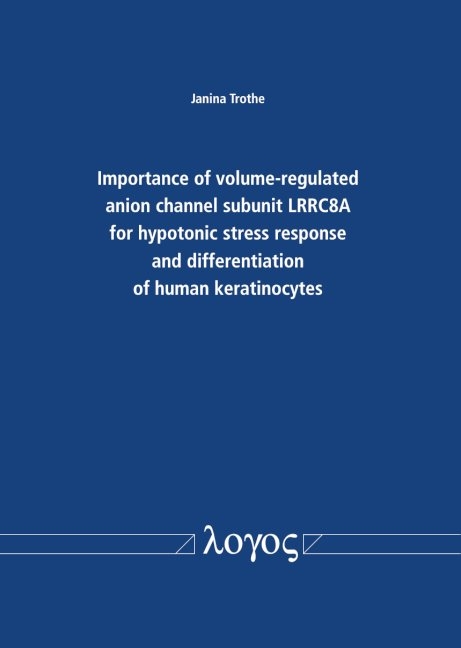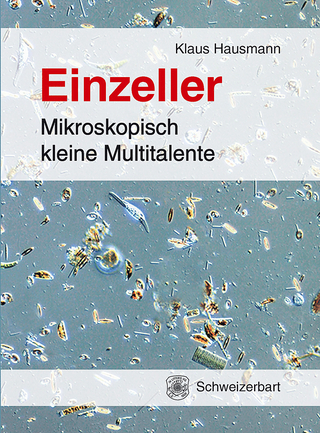
Importance of volume-regulated anion channel subunit LRRC8A for hypotonic stress response and differentiation of human keratinocytes
Seiten
2020
Logos Berlin (Verlag)
978-3-8325-5165-0 (ISBN)
Logos Berlin (Verlag)
978-3-8325-5165-0 (ISBN)
The human epidermis is constantly self-renewing by proliferation and differentiation of keratinocytes and forms an important barrier, which is frequently challenged by various environmental influences including osmotic perturbations. Osmotic cell swelling of all mammalian cells is counteracted by regulatory volume decrease (RVD), which is driven by volume-regulated anion channels (VRACs). Recently, VRACs were identified to be composed of LRRC8 heteromers with LRRC8A as essential VRAC subunit. Additionally, LRRC8 complexes were shown to mediate various cell type-specific functions.
Here, a CRISPR-Cas9-mediated LRRC8A gene knock-out was generated in human keratinocytes to investigate the function of LRRC8A during hypotonic stress response and differentiation. It was shown that LRRC8A is essential for VRAC activity and also contributes to regulatory volume decrease of HaCaT cells and primary keratinocytes. Additionally, hypotonic stimulation of HaCaT cells resulted in an increase of intracellular Ca raisebox1ex scriptsize 2+ concentration, which enhanced VRAC activity and RVD. Interestingly, immunohistological staining showed preferential localization of LRRC8A in the basal layer of human native epidermis. Furthermore, it was shown that in the absence of LRRC8A not only proliferation of HaCaT cells was reduced but also expression of differentiation markers occurred earlier after induction of differentiation in 2D as well as in 3D reconstructed HaCaT epidermis equivalents. In contrast, barrier function of HaCaT epidermis equivalents was not altered in the absence of LRRC8A.
Taken together, LRRC8A is important in hypotonic stress response as well as keratinocyte proliferation and differentiation. It can be speculated that LRRC8A is another regulator for the transition from keratinocyte proliferation to differentiation and therefore important for epidermal homeostasis.
Here, a CRISPR-Cas9-mediated LRRC8A gene knock-out was generated in human keratinocytes to investigate the function of LRRC8A during hypotonic stress response and differentiation. It was shown that LRRC8A is essential for VRAC activity and also contributes to regulatory volume decrease of HaCaT cells and primary keratinocytes. Additionally, hypotonic stimulation of HaCaT cells resulted in an increase of intracellular Ca raisebox1ex scriptsize 2+ concentration, which enhanced VRAC activity and RVD. Interestingly, immunohistological staining showed preferential localization of LRRC8A in the basal layer of human native epidermis. Furthermore, it was shown that in the absence of LRRC8A not only proliferation of HaCaT cells was reduced but also expression of differentiation markers occurred earlier after induction of differentiation in 2D as well as in 3D reconstructed HaCaT epidermis equivalents. In contrast, barrier function of HaCaT epidermis equivalents was not altered in the absence of LRRC8A.
Taken together, LRRC8A is important in hypotonic stress response as well as keratinocyte proliferation and differentiation. It can be speculated that LRRC8A is another regulator for the transition from keratinocyte proliferation to differentiation and therefore important for epidermal homeostasis.
| Erscheinungsdatum | 11.09.2020 |
|---|---|
| Verlagsort | Berlin |
| Sprache | englisch |
| Maße | 145 x 210 mm |
| Einbandart | Paperback |
| Themenwelt | Naturwissenschaften ► Biologie ► Zellbiologie |
| Schlagworte | calcium signalling • CRISPR-Cas9 • epidermis • Ionenkanal • Zellvolumen |
| ISBN-10 | 3-8325-5165-4 / 3832551654 |
| ISBN-13 | 978-3-8325-5165-0 / 9783832551650 |
| Zustand | Neuware |
| Haben Sie eine Frage zum Produkt? |
Mehr entdecken
aus dem Bereich
aus dem Bereich
mikroskopisch kleine Multitalente
Buch | Hardcover (2024)
Schweizerbart'sche, E. (Verlag)
29,90 €


